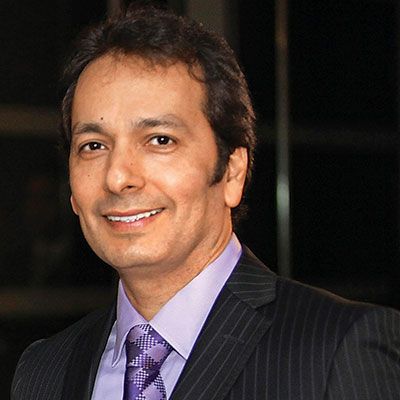On this 74th Independence Day, economies world over seem to be in the throes of a crisis. Britain has announced that it has slipped into a deep recession. All global economies are set to contract into negative territories. For its part, India has played its cards extremely cautiously. While it did go ‘hammer and tongs’ during the pandemic with its Rs 20 trillion economic package , most of this was non-fiscal. It has instead chosen to act upon sectors needing structural reforms like agriculture, domestic defence production and mining, among others.
John Maynard Keynes, the British economist whose theories came to the rescue of industry post-World War, mooted government spending to counteract slow economic growth. He reasoned that extra spending by government is needed to ensure aggregate demand remains high enough to maintain full employment. According to an article in The Economist, these theories collapsed during the 1970s where it was seen that high inflation and high unemployment failed to move in the opposite direction as was expected. Policymakers then concluded that it was no longer possible to ‘spend your way out of a recession’. Milton Friedman, a Keynes contrarian, held that ‘if policymakers tried to stimulate without tackling underlying structural deficiencies, they would raise inflation without bringing unemployment down’.
These bailout packages will result in debt shooting through the roof; as per estimates, advanced economies will run an average deficit of 11 per cent of GDP this year, according to the IMF, even if the second half of the year sees no more lockdowns and a gradual recovery. The public debt of the developed world could run to $66 trillion, which might be 122 per cent of GDP by year end.
India’s economy is suffering a double whammy. While the government will cut public spending all around, including watering down plans for the National Infrastructure Pipeline (NIP) announced in February earlier this year, its pipeline of projects has been the weakest in past 14 years. Therefore, it is critical that it continues its path of structural reforms. Considering the mandate the current ruling party enjoys with virtually no opposition, it would be foolhardy to fritter away the opportunity of reform. Agriculture and mining reforms have been brought on boldly. Similar courage needs to be displayed in accelerating PSU divestment.
I have witnessed that, over decades; the government has never managed to get the timing right—so it should not try. Each time the market is booming, all experts begin to recommend divestment. And by the time the stage is set for it, the market turns bearish, the divestment calculations fail and so does the divestment plan. Divestment needs to be carried out on a regular basis and the government should stop trying to time it as the gains will be realised not so much through the divestment proceeds as from the improvement in the valuations of companies; and then in turn through the second tranche of divestment from such companies.

Photo courtesy: Express Pharma
The government seems to be listening. Several of my suggestions have been acted upon over the past 12 months. My column uploaded on August 1, 2019, bears testimony to its proactive stance. Six out of 10 of my suggestions seem to have been acted upon:
1. The rental housing scheme
2. The tax amnesty scheme
3. Relaxation of income tax scrutiny cases
4. PSU divestment
5. Incentivising ‘honest taxpayers’
6. Easing the tax system
However, the suggestion made to unclog stuck projects is yet to make progress. The suggestion of saving Rs 1.85 trillion by not buying land for road construction but using a leasing formula can also be a gamechanger as it can scale up across all road networks, including state and smaller urban centres.
Meanwhile, from the ramparts of the Red Fort, Prime Minister Narendra Modi reminded us of the accomplishments of the government as India entered the 74th year of its Independence. This included the launch of the NIP fund with a Rs 110 trillion plan, which now has 7,000 projects ready. He clarified that the intent is to develop a multimodal infrastructure network in an integrated manner, rather than silos. Coastlines are to sport four-lane roads facilitating trade from our ports.
Further, the Prime Minister informed us that although we could only do 300 tests a day in one laboratory when the pandemic hit, we now have the ability totest nearly 7 lakh cases a day. India has also launched the National Digital Health Mission, which will provide a health ID for all Indians. The New Education Policy (NEP) was also launched earlier this month.
To integrate villages into Digital India, the Prime Minister announced taking optic fibre installations from the current 150,000 village panchayats to all 600,000 villages in India within the next 1,000 days. On real estate, he reminded us that home loans have become cheaper and a Rs 250 billion fund corpus was established to complete housing projects stuck in a limbo. Further, he iterated that agriculture reforms were well fortified with a mandate of Rs 1 trillion, which would be used to build up agri-infrastructure in line with the recently announced reforms.
Providing an update on the Jal Jeevan mission, he added that having added water pipeline connections to 20 million families last year, India is adding tap-pipe connections to 1 lakh families daily. During the Coronavirus pandemic, digital measures have helped distribute free rations to 800 million Indians, and Rs 900 billion has been transferred to the bank accounts of the beneficiaries.
There is no doubt that the Modi Government has scaled up social reform and brought a vast majority of Indian within the social security framework. But for the government to continue to provide social reform, revenues from business and, consequently, the economy need to grow. The chord of structural reform he has struck of late needs to resonate even louder to secure the sweet melody of independence. Structural reform is the only vaccine that can cure our economic malaise.




















